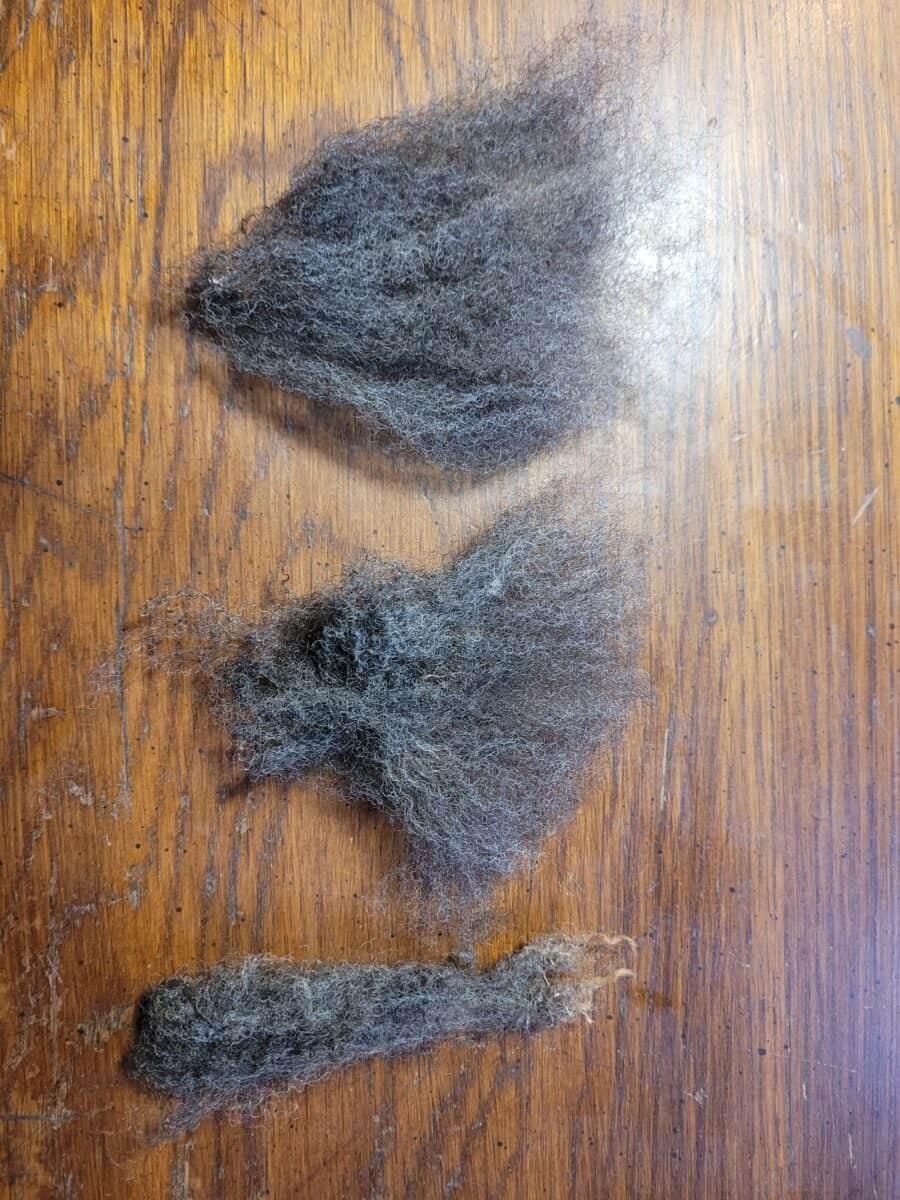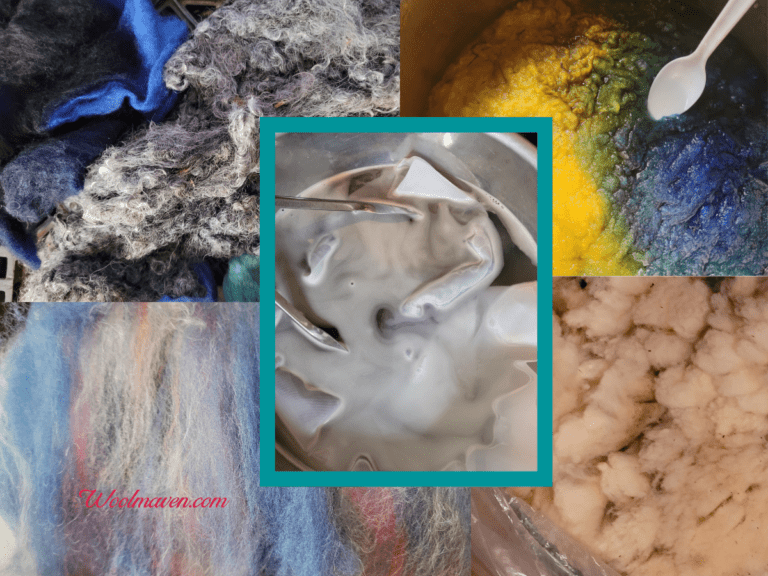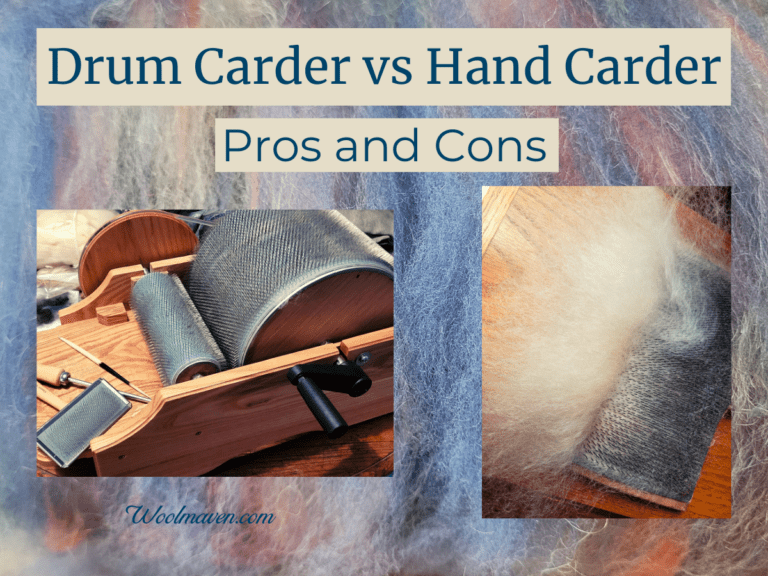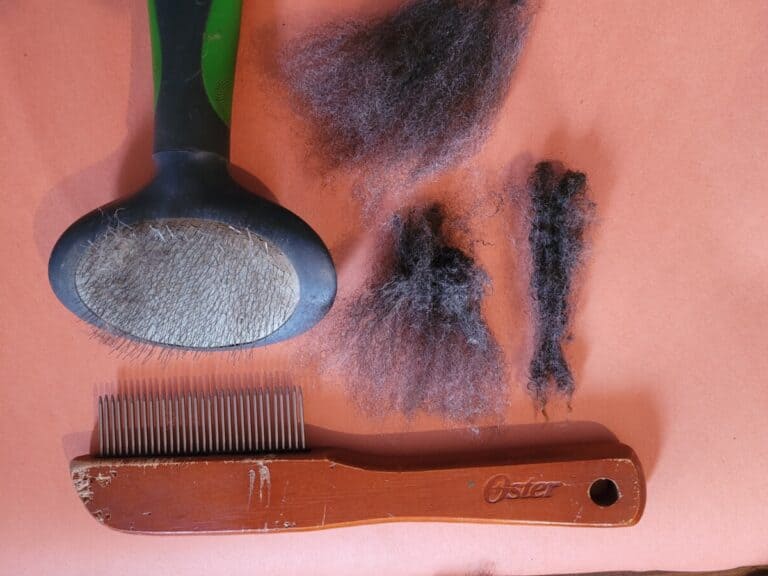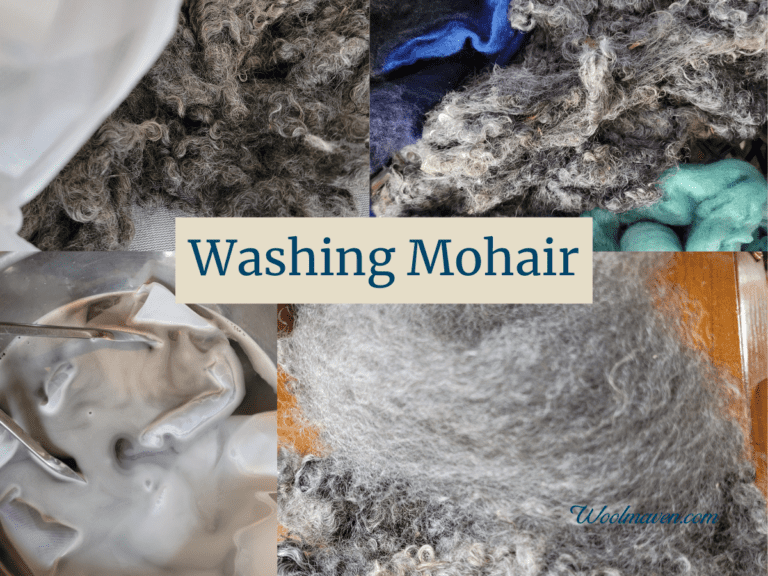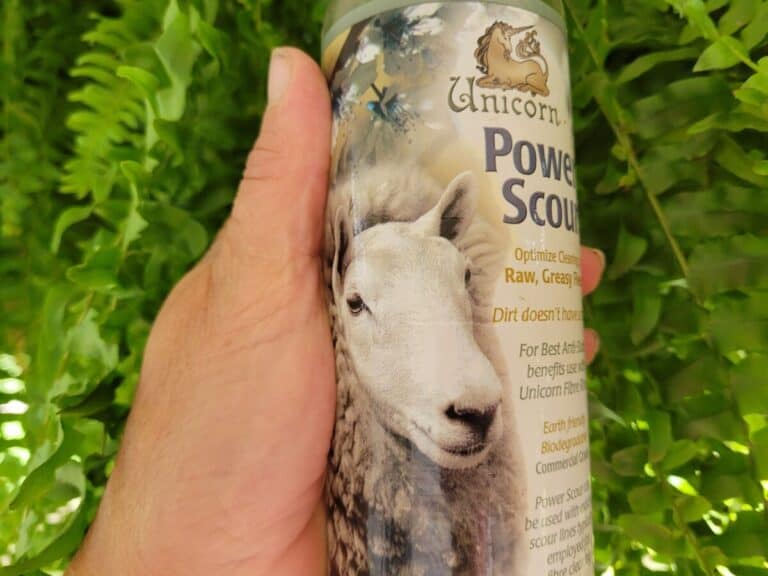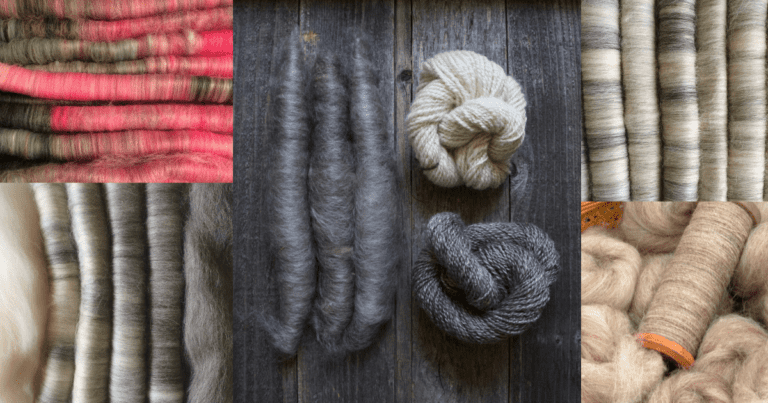How To Get Raw Wool Ready For Spinning In The Grease
You’ve just had your sheep shorn or you purchased a promising fleece from a fellow wool lover and, of course, you are planning to use as a spinning project!
It’s always a big day when you get a new fleece to work with!
Now that you’ve got a bag chock full of an awesome fleece, what are the things you need to do to your fleece to get it ready to spin?
To spin wool in the grease, skirt the wool, then take a lock of fiber and tease out the ends. If the wool will tease out, it is ready to spin in the grease. If the wool will not tease out, it needs to be washed before spinning, so that the wool can be carded (shorter staple length wools) or combed (longer staple length wools) to separate out the fibers.
I really do get excited about all the possibilities of a new fleece, whether it’s from one of our sheep or a fleece I purchased. It’s always interesting to see how easy the wool is to work with and how it spins up.
Raw Wool vs Washed: Which should you use? goes over the pros and cons of each.
If you are using your own wool, skirt the fleece
Your first step is going to be to skirt the fleece. Skirting means to lay the fleece out flat and take off all of the short fibers around the legs and the belly and remove any vegetable matter or dags (poo balls).
The reason you are tossing some of the fleece off right away is so the vegetable matter, like hay chaff, manure balls and raggedy locks of wool don’t get mixed in with the clean parts of your fleece.
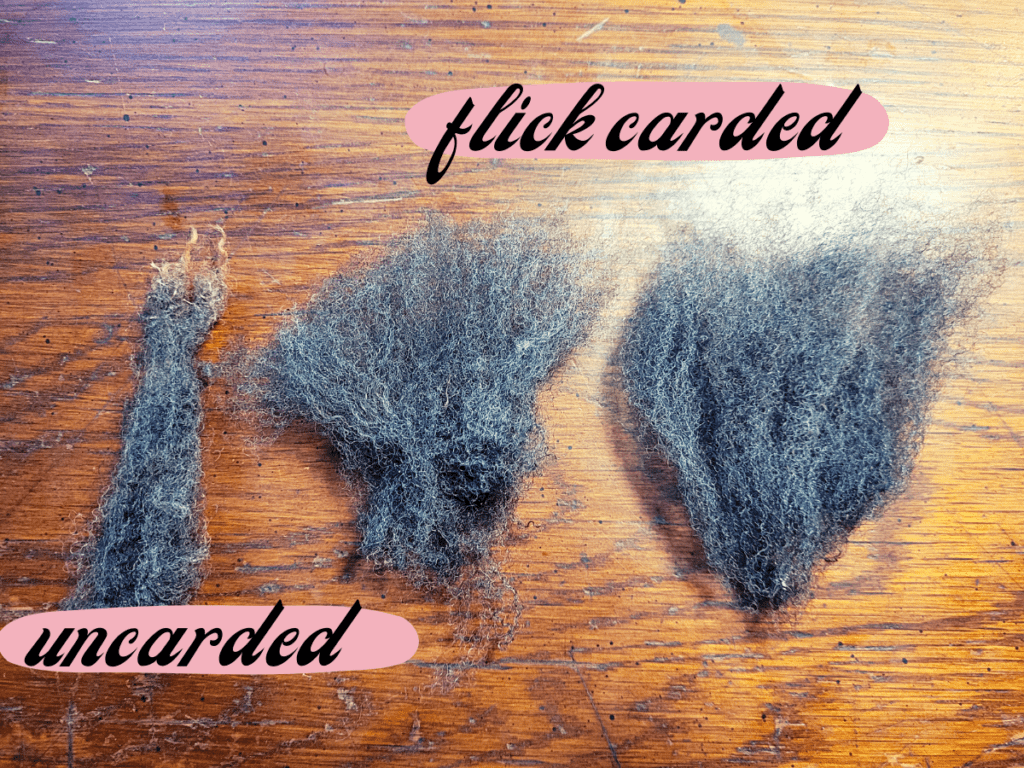
I know it’s hard to throw out parts of the fleece, especially when you are really excited to get going with spinning, but do it anyway!
Any junky parts or little debris bits you leave in can contaminate more of the fleece when you move the bag.
This makes a ton more work for you later, especially the vegetable matter (VM) since those litter monsters are hard to get out as it is!
If you absolutely can not part with any of the fleece, still skirt it, but keep the not so great sections in a separate bag, away from the main fleece.
In a month or so, you’ll be able to part with them, for now, just put them in their own bag.
How To Wash Raw Wool gives you the steps to wash these bits, if you decide to use them later.
If you are buying the fleece, it is usually pre skirted
Most folks will skirt the fleece for you when you before they bag it up to be shipped or sold.
I know of a few folks who do not skirt their for sale fleeces, but most will have at least lightly skirted the fleece for you.
It’s always a good policy to take the fleece out of the bag and open it up to see what you will be working with.
At the very least a bit more dirt or chaff will fall out, which is good for you, since that’s less you have to worry about later!
Determine if your fleece is suitable to be used raw
Now that your fleece is skirted (if you didn’t do that already skirt it now), take a lock of the wool and see what you can do with it.
I’m figuring that you are interested in spinning raw wool, if not, just plan to wash the fleece.
You can always wash a fleece rather than using it raw. This is completely your choice and one works just as well as the other.
If you would like to spin raw wool, we have to look a bit further and see if spinning without further processing will work with the particular fleece you have selected.
The Classic Carder has a nice short article and video on working with grease wool.
Grab a lock of wool and tease it
Take out a lock or two of wool, a lock is just the small section that the fleece will naturally separate out into. Finer wools will look like rectangles, medium wools tend to look more like triangles.
Start to play around with the lock and see:
- Can you separate out the fibers by hand or do you need a carder?
- How long is the staple (length of the wool fiber)?
- How greasy does the wool feel to you?
- If the fleece is more than one color, are you happy with yarn that varies in color or do you want the yarn to all look the same?
If you can easily separate out the individual wool fibers and the staple is 3 inches or more, you should be able to comfortably spin this wool raw.
If the fibers are hard to separate out, the staple is short or the wool feels really greasy to you, you’ll probably want to card the wool before spinning which means you’ll want to wash it first, then card it.
You can card grease or raw wool, but it’s not the best idea since it makes your cards dirty with lanolin and what ever else is on the raw wool. It’s better to keep your cards clean by carding washed wool.
Research breed wool use
Before you get to actually spinning, you’ll need to do some research, if you haven’t already, on the best uses for the wool that you have decided to work with.
If you know the microns then you’ll have a great idea of what to use the wool for.
If you don’t know the microns specifically, you can give it a good guess by knowing the breed and looking up the wool micron range for that breed.
The second thing you’ll need to know is staple length. Staple length, as mentioned above, is the length of the individual wool fiber.
The reason you want to know staple length is that shorter wools generally need to be carded before spinning.
Longer wools can be spun without carding or, if fiber preparation is needed, combs are the preferred way to separate out long wool fibers.
Generally, shorter wool staples or finer wools will be best spun after washing and carding.
Medium length wool is amenable to spinning in the grease, as are wools with long staple lengths, as long as you can tease apart the fibers by hand.
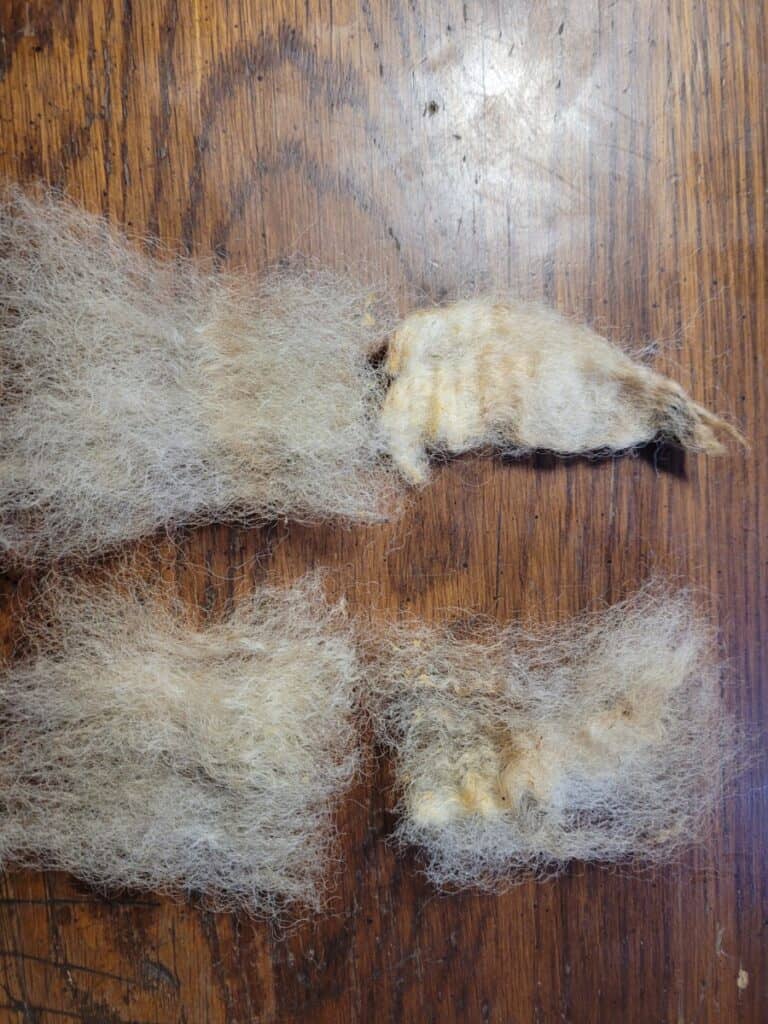
If you are using the wool raw, it’s time to get spinning
If you have done the work, so far, and the wool is looking like a good candidate for spinning in the grease, now is the time to get started!
I pull off a good sized section of wool from the fleece, something along the lines of a double handful (or a bit smaller than your head!), and work with that small section. Then grab more, as needed.
For anyone super concerned with dirt on the carpet or floor, as you spin the wool the dirt and VM bits will fall out onto your leg, where ever you put the chunk of wool and, of course, the floor.
It will be easier to clean up these bits if you are working on a solid surface, like wood or linoleum, rather than carpet. Another option is to go outside where the dirt doesn’t matter!
You may prefer to wash raw wool before spinning
When the wool you are working with does not meet your expectations for spinning in the grease, it’s too greasy, dirty or just feels blah to you, consider washing the fleece. It can make a big difference.
If you have decided to wash your wool, before you get started spinning, you have a couple of options. You can wash the entire fleece all at once or wash a section of fleece that you’ll use for now.
I have better luck with washing the smaller sections of fleece. This keeps the whole process more countertop friendly.
Also, if you have a fleece that is prone to felting, washing a smaller amount at a time gives you plenty of extra fiber to have on reserve if you end up felting the wool rather than just washing it.
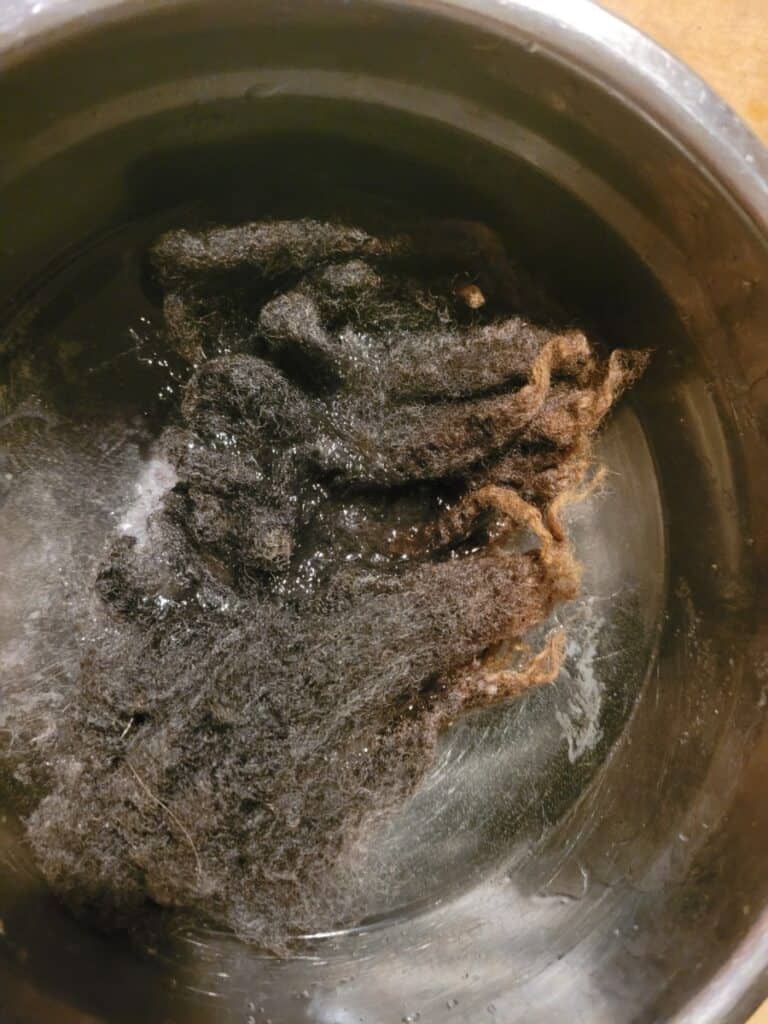
Consider how you store raw wool
One final somewhat related thing to talk about here is that you need to watch out for bugs. Wool moths will get into your wool, both fleeces and finished handmade items and eat through the yarn, yikes!
When I find these guys, I stick the bag of wool in the freezer. I’d rather do that than moth balls, since I don’t like the smell of them.
Either way, get on to wiping out the moths when you see them, they’ll just keep eating your wool stash if you ignore them!

